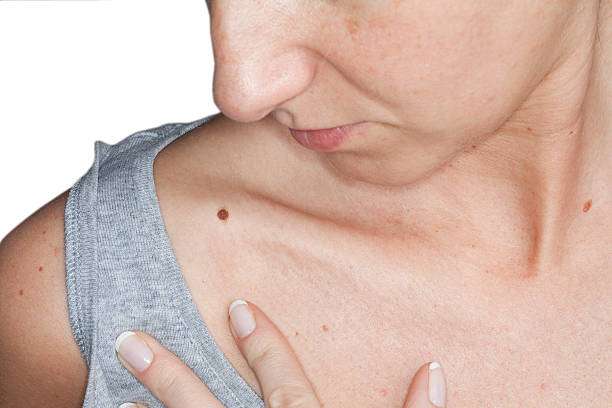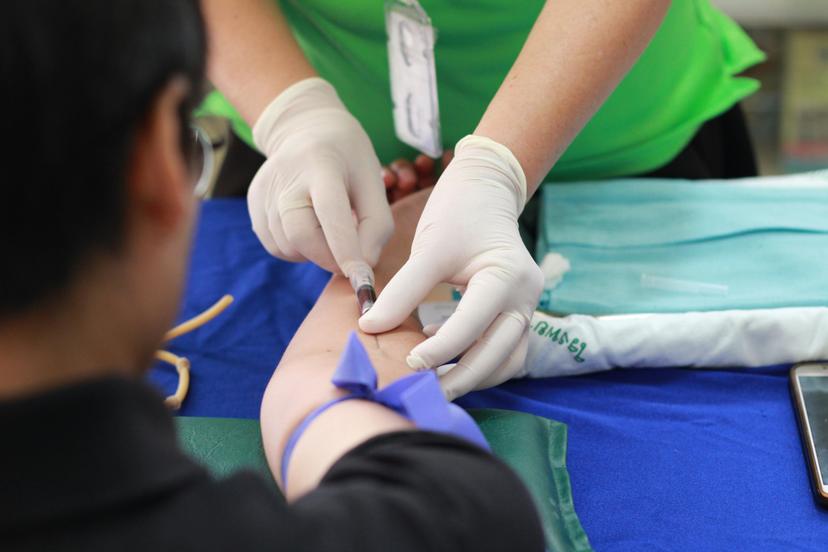
Exploring the Three Main Skin Cancer Types
20 Apr, 2024
 Healthtrip
HealthtripSkin cancer is a prevalent health concern worldwide, with its incidence steadily increasing over the years. Understanding the different types of skin cancer is crucial for early detection and effective treatment. Among the various types, melanoma, basal cell carcinoma, and squamous cell carcinoma are the most common and significant forms. Recognizing their characteristics, risk factors, and warning signs can help individuals take proactive steps in protecting their skin health.
Understanding Skin Cancer Types
a/ Melanoma: The Most Dangerous Form How to Fade Skin Cancer
Most popular procedures in India
Melanoma is the malignant tumor that derives from the cells that produces melanin pigment in the skin known as melanocytes. It is a well- known fact for its aggressive and destructive abilities to grow and spread towards further organs of the body. Melanoma commonly becomes a nodular or a spot with irregular mouth, color changes, and asymmetry. Discovery as the early on the other hand, melanoma of advanced stage is a difficult task to handle and it has a poor prognosis.
b/ Basal Cell Carcinoma: Skin cancer is a relatively common type of cancer that serves as the focus of this article.
Wellness Treatments
Give yourself the time to relax
Lowest Prices Guaranteed!

Lowest Prices Guaranteed!
Basal cell carcinoma, commonly known as BCC, is a form of cancer derived from the basal cells situated in the outermost layer of the skin. It is the most common type of skin cancer, nearly accounting for 80 percent of all skin cancer. BCC tends to be slow-growing, is unlikely to involve distant locations, but if treated, can lead to local problems of significant impact. In general, typical symptoms of BCC involve pearly or waxy moles, raised flatematose lesions (like brown or pink) that remain unhealed, or scabs that do not heal.
c/ Squamous Cell Carcinoma: The Australia Season Might Lead to A Common Skin Cancer with Chance to Disseminate
The SCC (Squamous cell carcinoma) type of cancer originates in the squamous cells that are majorly the forms of skin upper layers. One thing about SCC is that it is less aggressive but targets nearby lymph nodes and tissues if treatment is delayed. SCC typically appears as flat adherent salmon-colored and occasionally thickened plaques, open ulcerated areas, or palpable growths with central depression. SCC, either from long-term sun exposure, radiation therapy or pre-breeding skin diseases, has high chances of happening.
Factors Contributing to Skin Cancer Development
Several factors contribute to the development of skin cancer, including:Several factors contribute to the development of skin cancer, including:
- UV rays are produced by the sun and also by some artificial sources as tanning beds.
- If hair color is flat, eyes are light-colored, or the skin is pale and there is the easiness to get a tan, it is melanin deficiency and the susceptibility to a lot of sun damage.
- Having a strong family history of skin cancer or the genetic risk for the disease.
- Immunosuppression whether it is from disease conditions or drug therapy is a very important factor to consider when looking at the risk of developing viral infections.
- Natural factors, in various ways, could lead to ongoing exposure to carcinogens or chemicals from industrial sites. Create your own unique version with the given sentence and make it grammatically correct.
Comprehending these risk factors, thus, allows frightened individuals to evaluate their susceptibility to skin cancer and take adequate precautionary measures.
Early Detection Strategies for Skin Cancer
Skin cancer diagnosis is potentially curable when it's detected early, so early-stage cancer leads to better treatment outcomes. Individuals can take proactive steps to monitor their skin health and identify any suspicious changes by:Individuals can take proactive steps to monitor their skin health and identify any suspicious changes by:
- A monthly self-examination to look out for new moles, the changes of existing ones, or any other skin lesions that differ from the norm is crucial.
- Following the ABCDE rule for assessing moles: The main signs are the symmetry of small mole (its one half is not matching the other half), edge irregularity (its edges are irregular or dotted), color variation (moles can have multiple colors and uneven distribution of pigment), diameter (usually moles are larger than a dot of a pencil eraser), and the evolving (moles may change in size, shape, color, or elevation).
- An early detection can be done by individuals if they visit medical doctor right away if there are any reasuring symptoms observed such as the rapid growth, abnormal bleeding, itching, or ulcerating mole or a lesion.
It's strongly advised that people with a family history of skin cancer or those with additional risk factors should be routinely examined by the dermatologists and other healthcare providers.
Diagnosis and Staging of Skin Cancer
The diagnosis of skin cancer is done as a result of an examination with a comprehensive evaluation of the skin lesions and perhaps, using a number of diagnostic tools. Dermatologists normally perform a detailed examination of the concerned areas, magnification and the thorough observation of the skin lesions procedure using the dermatoscope is usually employed. If there is a possibility of the suspicious lesion, for investigation of the pathology a biopsy can be performed, which implies obtaining a sample of tissue. The methods of biopsy can be different, and they can use as shave biopsy, punch biopsy, or excisional one depending on the size and type of the lesion.
Once diagnosed, a doctor can assess how advanced the skin cancer is, and this will help him or her to decide on the kind and course of treatment. The great majority of melanoma and other solid tumors are classified by the TNM system. This system records the depth and size of the initial tumor (T), whether the adjacent lymph nodes are involved (N), and whether the cancer is advanced or still localized, i.e. the presence of distant metastases (M). Staging lets medical professionals foresee the patient’s outcome and to select a suitable treatment regimen which fits in the peculiarities of each case.
Treatment Options for Different Skin Cancer Types
There are several forms of skin cancer treatment based on the tumour type, its stage and how and where it is located as well as on the health of the patient and their own personal preferences. The primary treatment modalities for skin cancer include:The primary treatment modalities for skin cancer include:
a/ Surgery: The cancerous tissue usually is the first target of choice for localized skin cancers which are removed by surgical means. For example, Mohs micrographic surgery, excision and curettage & electrodesiccation methods may all be utilized to eliminate the tumors involving the least healthy tissue from the zones which are around.
b/ Radiation Therapy: The radiation therapy is based on bombardment of high-energy radiations to the target area where cancers are found. It could be used as a principal treatment for patients not being surgical candidates or in an adjuvant therapy setting when the initial operation left residual cancer cells and pledged to further surgery.
c/ Chemotherapy: Chemotherapy implies the application of anticancer medicines, either by mouth or through veins to ward off the advance of cancer cells or hinder their development. Because it metastasis in other parts of the body, systemic chemotherapy is less commonly used in treatments for non-melanoma skin cancers except that in advanced or metastatic stages of the disease.
d/ Immunotherapy: Immunotherapy is an approach that fosters the recognition and fight against cancer cells by the immune system of the body itself. Immune checkpoint blockers like PD-1, CTLA-4, and IL-2, and interferon are a few of the agents that may be used to increase the immune response against malignant melanoma and other types of skin cancers.
e/ Targeted Therapy: Targeted therapy concentrate on detecting and killing of the cells, which have specific molecular alterations or mutations. For instance, bags like BRAF inhibitors and MEK inhibitors are best option for melanomas which are BRAF mutated. Other targeted agents are used for unresectable stage III or IV skin cancer.
f/ Photodynamic Therapy (PDT): PDT implies the introduction of photosensitizing agent followed by irradiation by the light which is clung to the defined wavelength. Such action translates into the agent activation and cancer selective lesion. PDT is the most effective way in curing the more superficial skin cancer and the lesions of the precancerous tumor.
Adjuvant Therapies and Supportive Care
On top of main therapy elements, measures of adjuvant therapy and care support significantly constitute a great contribution to the management of skin cancer, and to the increase of patient’s quality of life. Adjuvant therapies, like targeted or immunotherapies, may be given apart from primary one to support the reduction of the chances for disease recurrence and progression.
Supportive care implies providing a relief from symptoms, addressing the number of side effects that may come with the of treatment, and meeting all the patient needs on a physical, emotional, and psychological level. Palliative care services assist advances or metastatic patients by offering symptom relief treatment tools, making it comfortable and helping them to maintain the quality of their time left.
Conclusion
In general, skin cancer treatment is a broad field of medicine that used any of the available treatment modalities based on the individual client's condition. The days of skin cancer treatment being just based on surgery and radiation are long gone; now there are targeted agents and novel immunotherapies. That's what makes modern skin cancer treatment such a spectacular success.
Individuals diagnosed with skin cancer of unarguable importance should consult a multidisciplinary medical team consisting of dermatologists, surgical oncologists, radiation oncologists, medical oncologists, and supportive care specialists. Patients who choose to adopt a comprehensive treatment plan will do so with the aim of improving their quality of life and optimize their chances of managing cancer and having a longer life.
In addition, clinical investigations and trials of various skin cancer biologies and treatment strategies have been going on which will provide grounds for further advances in treatment efficacy and overall health outcomes for both the patients and the caregivers.
Remember, early detection, timely intervention, and comprehensive care are crucial for understanding various skin cancer types. Stay informed, prioritize sun protection, and seek prompt medical attention for any concerning skin changes. With diligence and proactive management, individuals can navigate their skin cancer journey with resilience and optimism. Discover Health Trip's wide range of services, dedicated to connecting you with the best doctors, hospitals, and logistics, all designed to ensure you receive the best care. Take charge of your health journey confidently With Health Trip's comprehensive platform.
Related Blogs

Melanoma: Understanding the Risks and Prevention
A guide to understanding melanoma risks, prevention strategies, and early

The Unseen Enemy: The Rise of Squamous Cell Carcinoma
Squamous cell carcinoma is a type of cancer that affects

The Unrelenting Fight: The Battle Against Skin Cancer
Skin cancer is a type of cancer that affects the

Cutaneous T-Cell Lymphoma: The Skin Cancer
Cutaneous T-cell lymphoma is a type of cancer that affects

Basal Cell Carcinoma: The Most Common Skin Cancer
Basal cell carcinoma is the most common type of skin

Exploring Effective Options for Melanoma Skin Cancer Treatment
Melanoma skin cancer is a serious and potentially life-threatening condition










